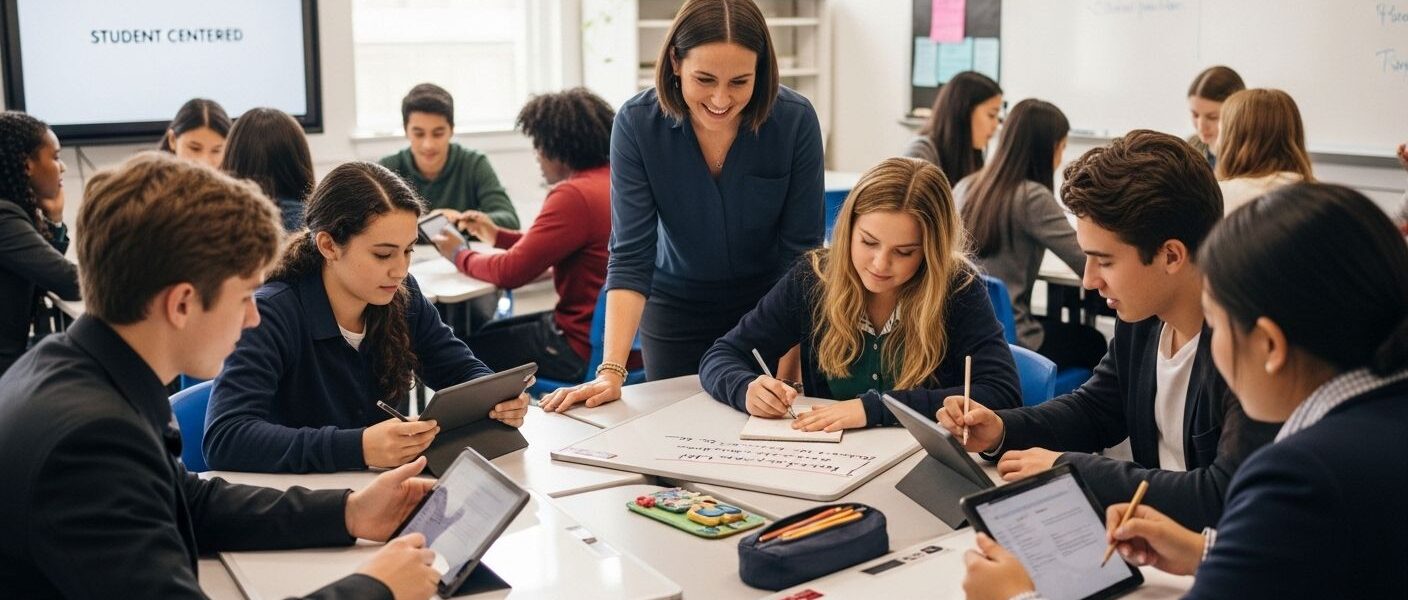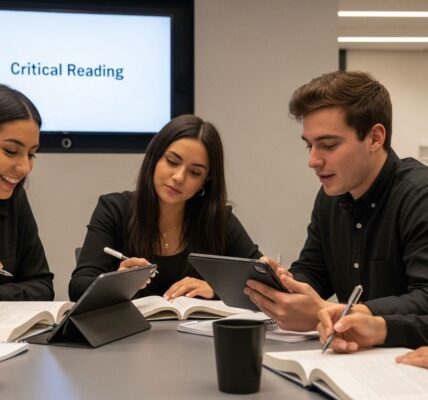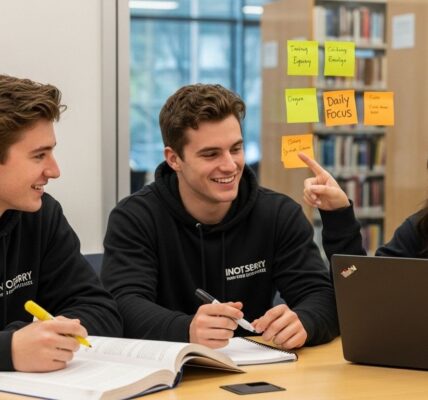Student centered strategies are shaking up classrooms everywhere and more schools are noticing the impact. Research shows that engaged students have noticeably higher retention and achievement rates. Most people think good teaching is about delivering information but real progress happens when students themselves take the driver’s seat.

Table of Contents
- Defining Student Centered Strategies And Their Purpose
- The Importance Of Student Engagement In Learning
- Core Principles Behind Student Centered Strategies
- How Student Centered Approaches Transform Classrooms
- Real-World Examples Of Student Centered Strategies In Action
Quick Summary
| Takeaway | Explanation |
|---|---|
| Empower students through ownership | Encourage students to actively participate in their learning process and decisions. |
| Foster meaningful student engagement | Engagement boosts academic performance and develops essential life skills. |
| Value individual learning differences | Recognize and adapt to each student’s unique needs and strengths for better outcomes. |
| Transform classroom environments | Create flexible spaces that promote collaboration, creativity, and dynamic learning. |
| Implement problem-based learning | Use real-world challenges to develop critical thinking and problem-solving skills. |
Defining Student Centered Strategies and Their Purpose
Student centered strategies represent a transformative approach to education that shifts traditional learning paradigms by placing students at the core of their academic experience. These innovative instructional methods recognize that learners are not passive recipients of knowledge but active participants who bring unique perspectives, experiences, and learning styles to the classroom.
Core Principles of Student Centered Learning
The fundamental philosophy behind student centered strategies is empowering learners to take ownership of their educational journey. By moving away from rigid, teacher-directed instruction, these approaches create dynamic learning environments where students are encouraged to explore, question, and construct understanding through personalized experiences.
To help clarify the differences between traditional teacher-centered and student-centered strategies, the following table compares key aspects of each approach discussed in the article:
| Aspect | Teacher-Centered Approach | Student-Centered Approach |
|---|---|---|
| Role of Student | Passive recipient of knowledge | Active participant and co-creator |
| Role of Teacher | Knowledge transmitter | Facilitator and guide |
| Instructional Methods | Standardized lectures | Flexible, personalized learning |
| Focus | Uniform curriculum | Individual interests and backgrounds |
| Learning Environment | Rigid, fixed seating | Adaptable, collaborative spaces |
| Assessment | Standardized tests | Varied, ongoing assessment and feedback |
This table highlights fundamental distinctions to reinforce the article’s explanation of the shift toward student-centered learning.
Key characteristics of student centered strategies include:
- Promoting self-directed learning
- Encouraging critical thinking and problem solving
- Valuing individual student interests and backgrounds
- Providing flexible learning pathways
- Supporting collaborative and interactive learning experiences
Theoretical Foundations and Practical Implementation
According to research from educational psychology, student centered strategies are rooted in constructivist learning theories that emphasize students actively building knowledge rather than passively receiving information. This approach recognizes that learners construct understanding through experiences, reflection, and social interactions.
Practical implementation involves creating classroom environments that support student autonomy, offer meaningful choices, and align instructional methods with diverse learning preferences. Educators become facilitators who guide students through personalized learning experiences, helping them develop metacognitive skills and intrinsic motivation.
For students seeking additional insights into optimizing their learning approach, our guide on effective study techniques provides complementary strategies that align with student centered learning principles.
The Importance of Student Engagement in Learning
Student engagement is a critical cornerstone of effective learning that transcends traditional classroom interactions. It represents a holistic approach to education where students are not merely passive recipients of information but active participants who invest emotional, cognitive, and behavioral energy into their academic experiences.
Defining Student Engagement
Engagement in learning encompasses multiple dimensions that go beyond simple classroom attendance. It involves students’ psychological investment in acquiring knowledge, developing skills, and understanding complex concepts. This multifaceted approach means students are intellectually curious, emotionally connected, and motivated to participate meaningfully in their educational journey.
Below is a table summarizing the key characteristics of meaningful student engagement as described in the article:
| Engagement Component | Description |
|---|---|
| Cognitive Investment | Commitment to understanding complex ideas and concepts |
| Active Participation | Engagement through contributing to discussions and classroom activities |
| Intellectual Curiosity | Willingness to explore topics beyond assigned materials |
| Personal Connection | Relating learning objectives to personal experiences and interests |
| Intrinsic Motivation | Internal drive to learn and pursue growth |
This breakdown provides a quick reference for readers to understand the essential components that define student engagement.
Key components of meaningful student engagement include:
- Cognitive investment in understanding complex ideas
- Active participation in classroom discussions
- Demonstrated curiosity and willingness to explore beyond assigned materials
- Personal connection to learning objectives
- Intrinsic motivation to learn and grow
Impact on Academic Performance and Personal Development
According to research from the Center for Community College Student Engagement, student engagement directly correlates with academic success, persistence, and long-term educational achievements. Students who are actively engaged demonstrate higher retention rates, improved critical thinking skills, and greater overall academic performance.
Engagement transforms learning from a transactional process to a transformative experience. When students feel genuinely connected to their educational environment, they develop essential skills like self-directed learning, problem solving, and intellectual curiosity. These skills extend far beyond academic settings, preparing students for future professional and personal challenges.
For students looking to enhance their learning strategies, our comprehensive study techniques guide offers additional insights into maximizing academic potential through active engagement.
Core Principles Behind Student Centered Strategies
Student centered strategies are grounded in a comprehensive educational philosophy that fundamentally reimagines the learning process. These strategies move beyond traditional instructional models by recognizing each student as a unique learner with individual strengths, challenges, and potential for growth.
Foundational Philosophical Approaches
At the core of student centered strategies lies a profound respect for learner autonomy and individual diversity. This approach challenges the conventional top-down educational model where teachers exclusively control knowledge transmission. Instead, it views students as active co-creators of their learning experience, capable of directing their intellectual development with appropriate guidance and support.
Key philosophical foundations include:
- Valuing individual learning differences
- Promoting learner agency and self-direction
- Recognizing multiple paths to understanding
- Emphasizing personal meaning making
- Supporting intrinsic motivation
Psychological and Pedagogical Underpinnings
The psychological foundations of student centered strategies draw from constructivist learning theories that emphasize how individuals actively construct knowledge through experiences, reflection, and social interactions. Research in educational psychology demonstrates that learners do not passively receive information but actively interpret and integrate new concepts with existing understanding.
These strategies fundamentally transform the educator’s role from a knowledge transmitter to a learning facilitator. Teachers become guides who design meaningful learning experiences, create supportive environments, and help students develop metacognitive skills that enable them to understand their own learning processes.
For students seeking practical applications of these learning principles, our comprehensive study skill resources offer additional strategies for personal academic development.
How Student Centered Approaches Transform Classrooms
Student centered approaches represent a profound paradigm shift in educational design, fundamentally reimagining the physical, pedagogical, and interpersonal dynamics of learning environments. These transformative strategies reconfigure traditional classroom structures, moving from rigid, instructor-dominated spaces to flexible, collaborative learning ecosystems.
Redesigning Physical and Instructional Spaces
In student centered classrooms, physical environments become dynamic and adaptable. Traditional rows of desks facing a single instructor are replaced with flexible seating arrangements that support collaborative learning, group discussions, and individualized work zones. This spatial transformation reflects the deeper philosophical shift toward student agency and personalized learning experiences.
Key transformational elements include:
- Modular furniture that can be easily reconfigured
- Multiple learning zones supporting different activities
- Technology-enabled spaces for interactive learning
- Areas that promote both individual and group work
- Spaces that reflect student input and creativity
Pedagogical Shifts in Instructional Methodology
According to research from KnowledgeWorks, student centered approaches fundamentally redefine the educator’s role from knowledge transmitter to learning architect. Teachers become facilitators who design meaningful learning experiences, curate resources, and provide personalized guidance rather than delivering standardized lectures.
This approach empowers students to take ownership of their learning journey, encouraging critical thinking, self-reflection, and intrinsic motivation. Classroom interactions become more dialogic, with students actively participating in knowledge construction, asking questions, and connecting learning to real-world contexts.
For students eager to explore practical strategies for maximizing their learning potential, our comprehensive study skill guide offers additional insights into effective learning techniques.
Real-World Examples of Student Centered Strategies in Action
Student centered strategies transcend theoretical concepts by manifesting in diverse, innovative learning approaches that actively engage students in their educational journey. These practical implementations demonstrate how personalized, interactive learning methodologies can transform traditional educational experiences across various academic settings.
Problem-Based Learning Environments
Problem-based learning represents a powerful student centered strategy where learners tackle complex, real-world challenges that require collaborative investigation and creative problem solving. Instead of passively receiving information, students become active researchers who design their own learning pathways, analyze multifaceted scenarios, and develop comprehensive solutions.
Key characteristics of problem-based learning include:
- Presenting authentic, complex real-world scenarios
- Encouraging interdisciplinary thinking
- Promoting collaborative group investigations
- Developing critical analysis skills
- Connecting academic concepts to practical applications
Collaborative and Experiential Learning Models
According to research from Vanderbilt University’s Center for Teaching, collaborative learning strategies transform traditional classroom dynamics by creating interactive environments where students co-construct knowledge through shared experiences and collective problem solving.
These models might involve project-based assignments, team research initiatives, or community-engaged learning programs where students work together to address genuine challenges. By centering student agency and active participation, these approaches develop essential skills like communication, teamwork, and adaptive thinking that extend far beyond traditional academic boundaries.

For students interested in exploring additional techniques for maximizing their learning potential, our comprehensive study skill resources provide practical strategies for academic success.
Transform Your Learning Journey with Reliable Educational Resources
Do you ever feel stuck using outdated learning methods that ignore your interests or unique learning style? You are not alone. Many students struggle with traditional classrooms where teacher-centered approaches dominate and personal engagement is lost. The article on student centered strategies explores how empowering student choice, fostering engagement, and recognizing individual differences are critical for academic success. But knowing about these strategies is only the first step. To truly take control of your educational path, you need access to up-to-date, trusted resources that encourage real-world learning and deeper understanding.

Unlock your full potential today. Explore Ultra News for expertly curated guides and the latest educational articles designed to support students who seek real growth. From practical study tips to insights on collaborative learning, our education section is tailored to help you build critical skills and confidence. Start leveraging these strategies right now by visiting Ultra News and set yourself up for lasting academic and personal achievement.
Frequently Asked Questions
What are student centered strategies?
Student centered strategies are educational approaches that prioritize students as active participants in their learning process, encouraging them to take ownership of their educational journey.
How do student centered strategies enhance student engagement?
These strategies foster student engagement by promoting cognitive investment, active participation, and personal connections to learning objectives, making students more invested in their educational experiences.
What are the core principles of student centered learning?
Core principles include promoting self-directed learning, valuing individual student interests and backgrounds, supporting collaborative learning experiences, and encouraging critical thinking and problem solving.
How can educators implement student centered strategies in the classroom?
Educators can implement student centered strategies by creating flexible learning environments, providing meaningful choices, facilitating collaborative projects, and guiding students through personalized learning experiences.




